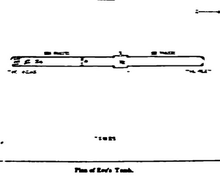🔺INTRODUCTION 🔻
The cities of the United Arab Emirates present a fascinating case study of the urban development which results when planning, architectural design and construction are wholly fashioned after the modern order. The study is all the more interesting when viewed in the context of the specific environment and the cultural fabric of a desert region in Arabia that has undergone an unprecedented form of development since the late 1960s. The coming of modern architecture and the International Style, in the cities of Abu Dhabi and Dubai in particular, was coupled with extensive cultivation projects implemented in an originally barren and arid landscape bordering on the expanse of the desert sands. The quality of change has therefore been ecological in terms of the effects seen in the built and natural environment.
Each Emirate, however, represents a different criterion in terms of architectural development, urban setting and resultant ecological implications. The accelerated construction projects, encompassing the infra-structure and superstructures, dictate an ongoing process of urban development which has marked an exceptional building experience with implications generally for the evolution of the city, town and landscape.
The research described in this book has taken into account the vernacular context through the traditional forms of building that existed in the area, while examining underlying concepts of the 'master plan' ..........https://en.wikipedia.org/wiki/Master_plan
The Architecture of the United Arab Emirates
The first major renovation under the Saudi kings was done between 1955 and 1973. In this renovation, four more minarets were added, the ceiling was refurnished, and the floor was replaced with artificial stone and marble. The Mas'a gallery (Al-Safa and Al-Marwah) is included in the Masjid via roofing and enclosements. During this renovation many of the historical features built by the Ottomans, particularly the support columns, were demolished.
The second Saudi renovations under King Fahd, added a new wing and an outdoor prayer area to the mosque. The new wing, which is also for prayers, is accessed through the King Fahd Gate. This extension was performed between 1982 and 1988.
The third Saudi extension (1988–2005) saw the building of more minarets, the erecting of a King's https://en.wikipedia.org/wiki/King_of_Saudi_Arabia residence overlooking the mosque and more prayer area in and around the mosque itself. These developments have taken place simultaneously with those in Arafat, Mina and Muzdalifah. This third extension has also resulted in 18 more gates, three domes corresponding in position to each gate and the installation of nearly 500 marble columns. Other modern development...https://en.wikipedia.org/wiki/Masjid_al-Haram
Tomb of Eve
From Wikipedia, the free encyclopedia
The Tomb of Eve, also known as Eve's Grave and Eve's Tomb, is an archeological site located in Jeddah, Saudi Arabia(21°29′31″N 39°11′24″E).[1] It is considered by some Muslims to be the burial place of Eve. Prince Faisal, Viceroy of Hejaz, destroyed it in 1928.[2] In 1975, the site was also sealed with concrete by religious authorities, who disapprove of pilgrims praying at tombs.[3]
Richard Francis Burton mentions seeing it in his translation of the Book of a Thousand Nights and a Night.[4]
Contents
[hide]Mentions[edit]
Angelo Pesce mentions this site in his book on Jeddah.[5] He mentions the earliest documented mention of the tomb is:
Dimensions[edit]
Émile-Félix Gautier estimates the length of the tomb to about 130 meters.[7]
Noted publicist Sirdar Ikbal Ali Shah mentions about the dimensions:
Aun Ar-Rafiq (Amir in Hijaz 1882–1905) tried to demolish the tomb, but this caused a public outcry. He then said: "But think you that 'our mother' was so tall? If the stupidity is international, let the tomb stand".[9]⇆ https://archive.org/stream/The_Architecture_of_the_United_Arab_Emirates/The_Architecture_of_the_United_Arab_Emirates_djvu.txt
All quotations from the Qur'an are taken from the edition published by Dar al 'Arabiyyah, Beirut, 1968, translated by Abdullah Yusuf Ali. All AD and AH (Hijrah) conversions are drawn from The Islamic and
Christian Calendars by G. S. P. Freeman-Grenville, published by Garnet, Reading, 1995.
Saudi Arabia may boast four Unesco world heritage sites, but none is an Islamic monument. In 2008 the organisation recognised the Nabataean ruins of Al-Hijr; in 2010 the desert settlement At-Turaif, the first capital of the Saudi dynasty from which Wahhabism spread; in 2014 the historic centre of Jeddah, with its Ottoman houses and the so-called Tomb of Eve which was sealed with concrete in 1975 to prevent pilgrims praying in front of it; and in 2015 the rocks of the Hail region, covered in prehistoric inscriptions.http://theartnewspaper.com/comment/comment/why-is-saudi-arabia-destroying-the-cultural-heritage-of-mecca-and-medina/
https://burocraufabc.files.wordpress.com/2014/.../aula-7-wright-2007-em-inglc3aas.p...
CIA, and NSA to share intelligence that might have .... mosque in 1979, a turning point in the history of Saudi Arabia. ..... New Yorkers, perhaps for most of them, political and economic ...... The ideological war over Egypt's future reached a climax on the ..... when the Prophet Mohammed had subjugated the Jews of Medina.


